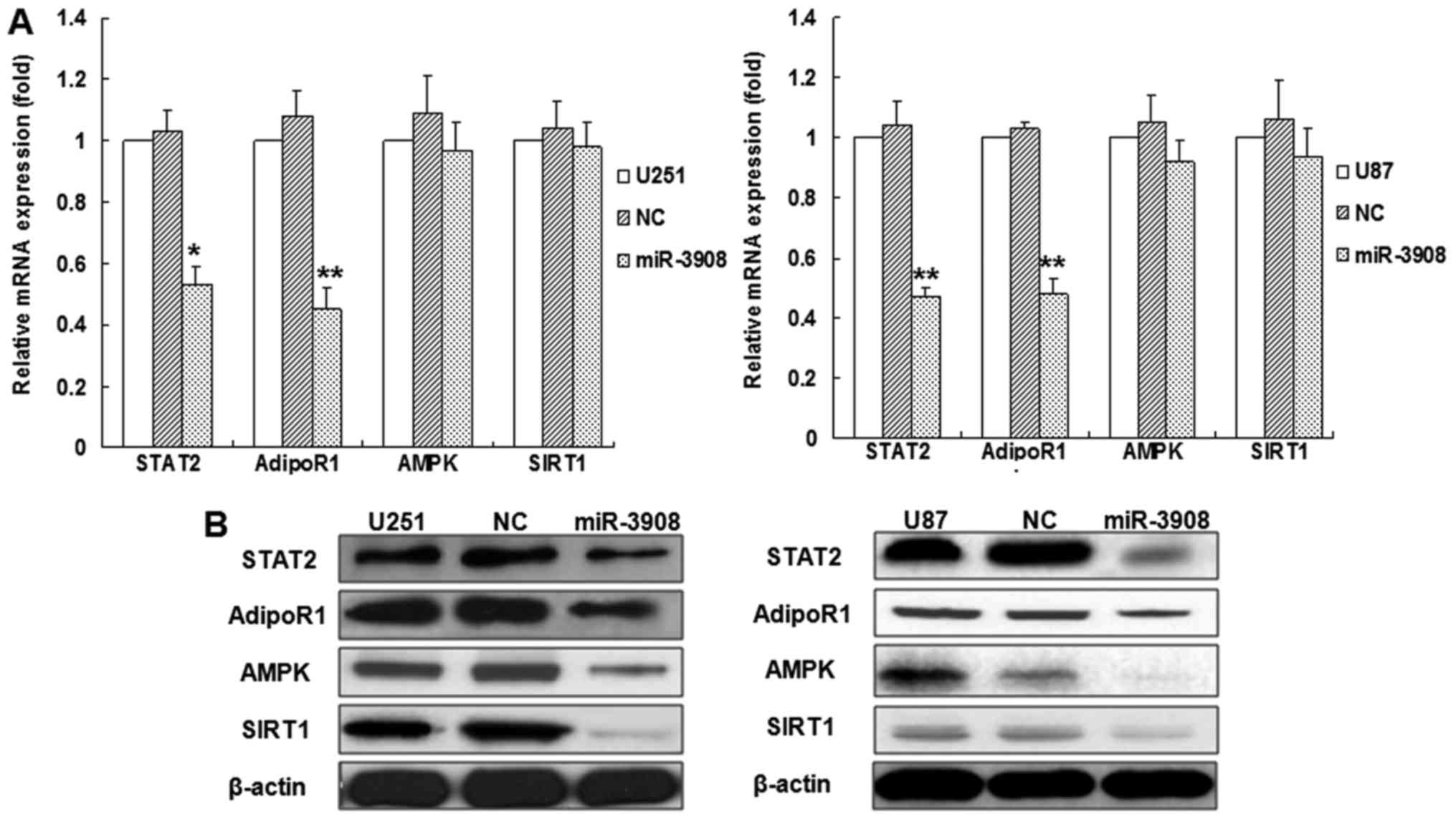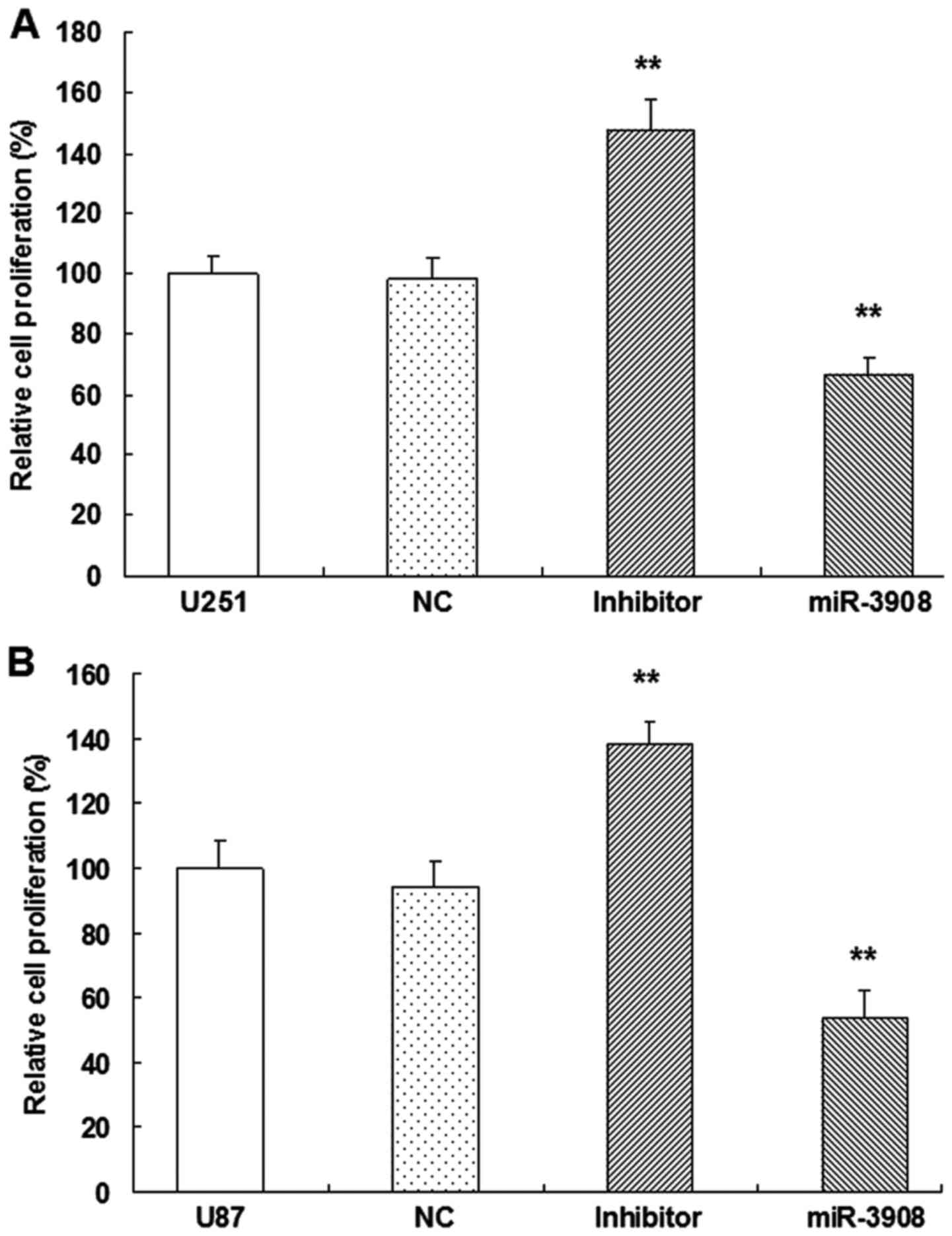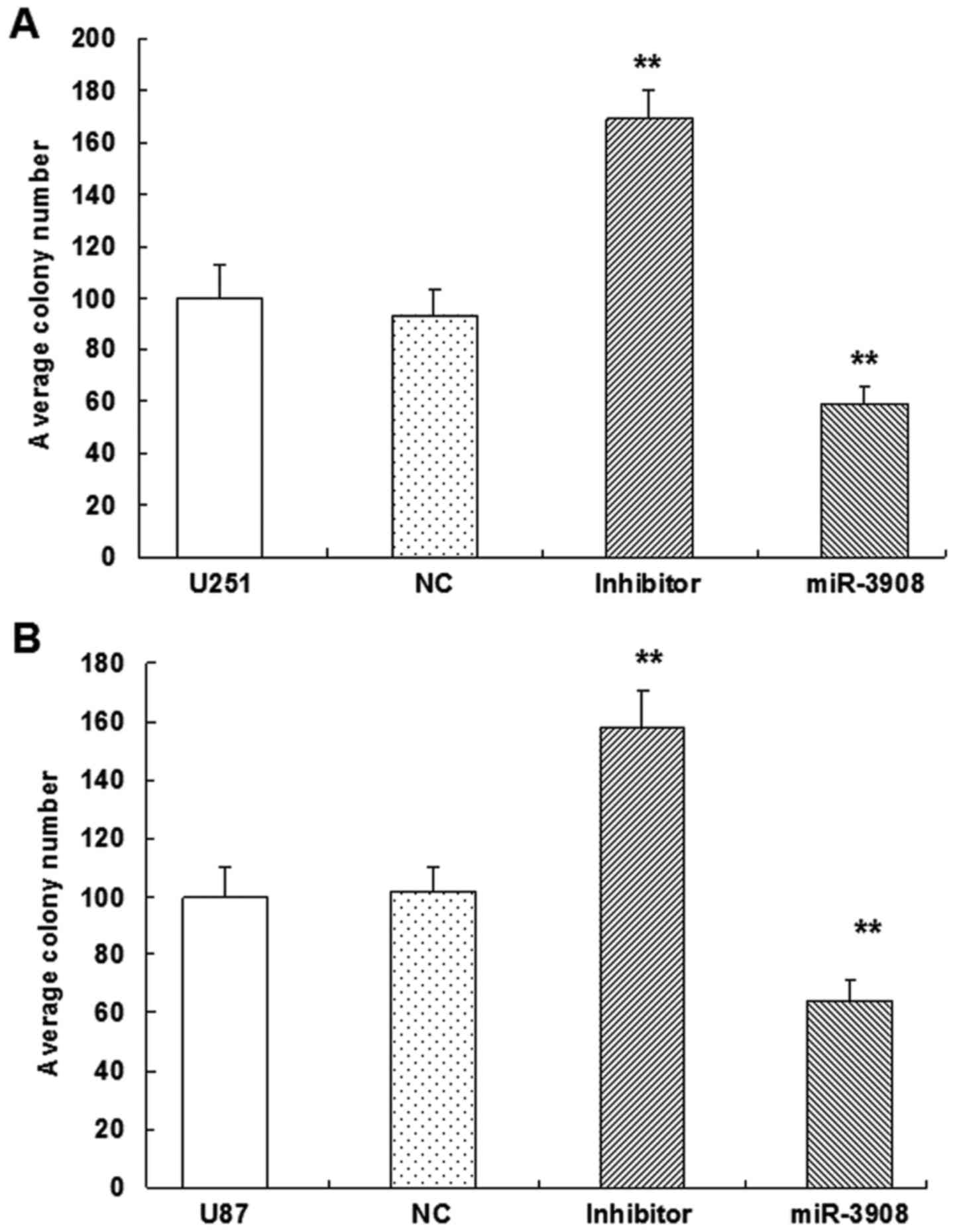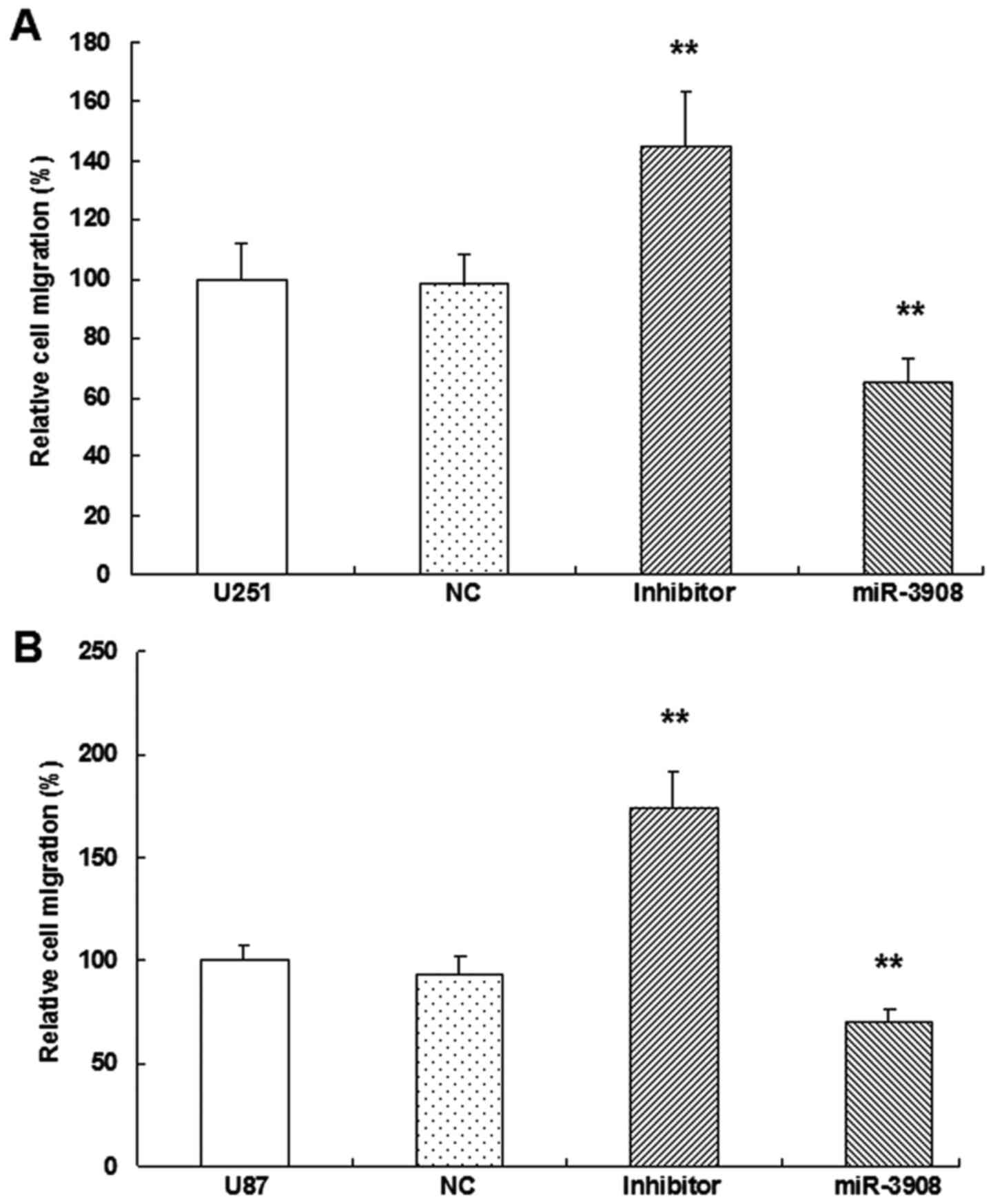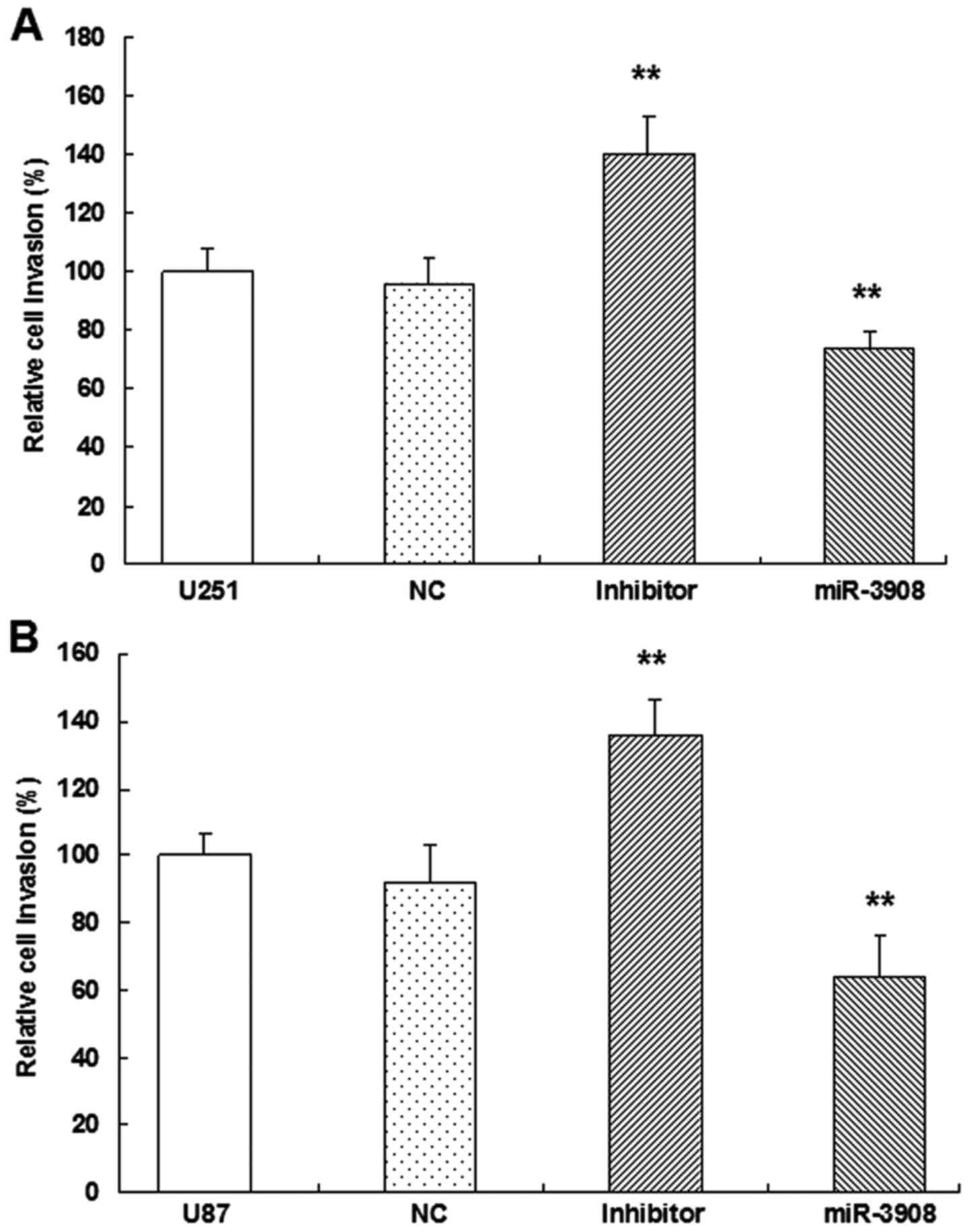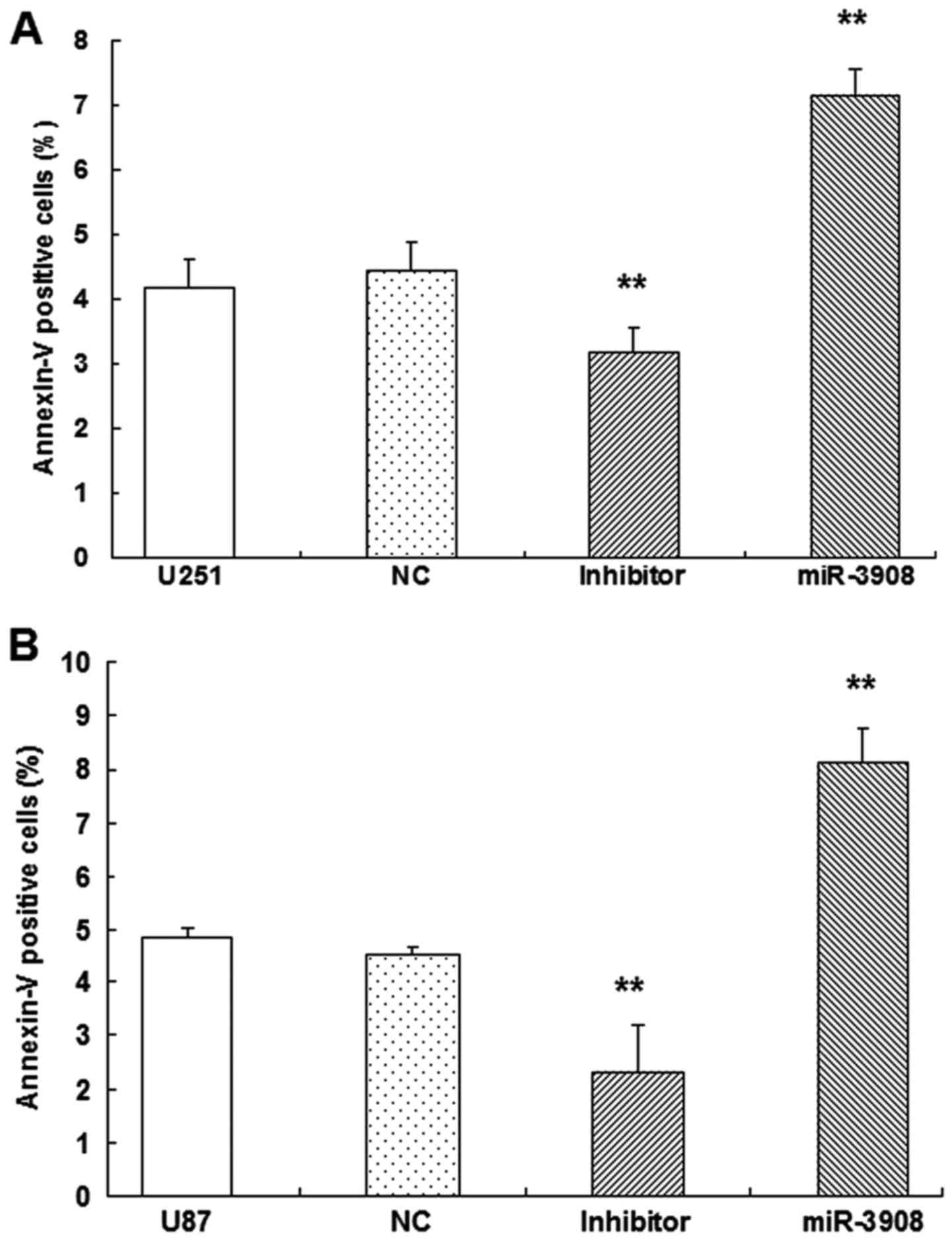|
1
|
Dolecek TA, Propp JM, Stroup NE and
Kruchko C: CBTRUS statistical report: Primary brain and central
nervous system tumors diagnosed in the United States in 2005–2009.
Neuro Oncol. 14 Suppl 5:v1–v49. 2012. View Article : Google Scholar : PubMed/NCBI
|
|
2
|
Louis DN, Ohgaki H, Wiestler OD, Cavenee
WK, Burger PC, Jouvet A, Scheithauer BW and Kleihues P: The 2007
WHO classification of tumours of the central nervous system. Acta
Neuropathol. 114:97–109. 2007. View Article : Google Scholar : PubMed/NCBI
|
|
3
|
Reifenberger G and Collins VP: Pathology
and molecular genetics of astrocytic gliomas. J Mol Med (Berl).
82:656–670. 2004. View Article : Google Scholar : PubMed/NCBI
|
|
4
|
Ohgaki H and Kleihues P: Genetic
alterations and signaling pathways in the evolution of gliomas.
Cancer Sci. 100:2235–2241. 2009. View Article : Google Scholar : PubMed/NCBI
|
|
5
|
Ohgaki H and Kleihues P: Genetic profile
of astrocytic and oligodendroglial gliomas. Brain Tumor Pathol.
28:177–183. 2011. View Article : Google Scholar : PubMed/NCBI
|
|
6
|
Ohgaki H and Kleihues P: Genetic pathways
to primary and secondary glioblastoma. Am J Pathol. 170:1445–1453.
2007. View Article : Google Scholar : PubMed/NCBI
|
|
7
|
Ostrom QT, Gittleman H, Farah P, Ondracek
A, Chen Y, Wolinsky Y, Stroup NE, Kruchko C and Barnholtz-Sloan JS:
CBTRUS statistical report: Primary brain and central nervous system
tumors diagnosed in the United States in 2006–2010. Neuro-oncol. 15
Suppl 2:ii1–ii56. 2013. View Article : Google Scholar : PubMed/NCBI
|
|
8
|
Chung S and Nakamura Y: MELK inhibitor,
novel molecular targeted therapeutics for human cancer stem cells.
Cell Cycle. 12:1655–1656. 2013. View
Article : Google Scholar : PubMed/NCBI
|
|
9
|
Au Yeung CL, Co NN, Tsuruga T, Yeung TL,
Kwan SY, Leung CS, Li Y, Lu ES, Kwan K, Wong KK, et al: Exosomal
transfer of stroma-derived miR21 confers paclitaxel resistance in
ovarian cancer cells through targeting APAF1. Nat Commun.
7:111502016. View Article : Google Scholar : PubMed/NCBI
|
|
10
|
Skog J, Würdinger T, van Rijn S, Meijer
DH, Gainche L, Sena-Esteves M, Curry WT Jr, Carter BS, Krichevsky
AM and Breakefield XO: Glioblastoma microvesicles transport RNA and
proteins that promote tumour growth and provide diagnostic
biomarkers. Nat Cell Biol. 10:1470–1476. 2008. View Article : Google Scholar : PubMed/NCBI
|
|
11
|
Yan R, Qureshi S, Zhong Z, Wen Z and
Darnell JE Jr: The genomic structure of the STAT genes: Multiple
exons in coincident sites in Stat1 and Stat2. Nucleic Acids Res.
23:459–463. 1995. View Article : Google Scholar : PubMed/NCBI
|
|
12
|
Wang J, Pham-Mitchell N, Schindler C and
Campbell IL: Dysregulated Sonic hedgehog signaling and
medulloblastoma consequent to IFN-alpha-stimulated
STAT2-independent production of IFN-gamma in the brain. J Clin
Invest. 112:535–543. 2003. View Article : Google Scholar : PubMed/NCBI
|
|
13
|
Barb D, Williams CJ, Neuwirth AK and
Mantzoros CS: Adiponectin in relation to malignancies: A review of
existing basic research and clinical evidence. Am J Clin Nutr.
86:s858–s866. 2007.PubMed/NCBI
|
|
14
|
Kaklamani VG, Wisinski KB, Sadim M, Gulden
C, Do A, Offit K, Baron JA, Ahsan H, Mantzoros C and Pasche B:
Variants of the adiponectin (ADIPOQ) and adiponectin receptor 1
(ADIPOR1) genes and colorectal cancer risk. JAMA. 300:1523–1531.
2008. View Article : Google Scholar : PubMed/NCBI
|
|
15
|
Kaklamani VG, Sadim M, Hsi A, Offit K,
Oddoux C, Ostrer H, Ahsan H, Pasche B and Mantzoros C: Variants of
the adiponectin and adiponectin receptor 1 genes and breast cancer
risk. Cancer Res. 68:3178–3184. 2008. View Article : Google Scholar : PubMed/NCBI
|
|
16
|
Kaklamani V, Yi N, Zhang K, Sadim M, Offit
K, Oddoux C, Ostrer H, Mantzoros C and Pasche B: Polymorphisms of
ADIPOQ and ADIPOR1 and prostate cancer risk. Metabolism.
60:1234–1243. 2011. View Article : Google Scholar : PubMed/NCBI
|
|
17
|
Kamada Y, Matsumoto H, Tamura S, Fukushima
J, Kiso S, Fukui K, Igura T, Maeda N, Kihara S, Funahashi T, et al:
Hypoadiponectinemia accelerates hepatic tumor formation in a
nonalcoholic steatohepatitis mouse model. J Hepatol. 47:556–564.
2007. View Article : Google Scholar : PubMed/NCBI
|
|
18
|
Fujisawa T, Endo H, Tomimoto A, Sugiyama
M, Takahashi H, Saito S, Inamori M, Nakajima N, Watanabe M, Kubota
N, et al: Adiponectin suppresses colorectal carcinogenesis under
the high-fat diet condition. Gut. 57:1531–1538. 2008. View Article : Google Scholar : PubMed/NCBI
|
|
19
|
Landskroner-Eiger S, Qian B, Muise ES,
Nawrocki AR, Berger JP, Fine EJ, Koba W, Deng Y, Pollard JW and
Scherer PE: Proangiogenic contribution of adiponectin toward
mammary tumor growth in vivo. Clin Cancer Res. 15:3265–3276. 2009.
View Article : Google Scholar : PubMed/NCBI
|
|
20
|
Denzel MS, Hebbard LW, Shostak G, Shapiro
L, Cardiff RD and Ranscht B: Adiponectin deficiency limits tumor
vascularization in the MMTV-PyV-mT mouse model of mammary cancer.
Clin Cancer Res. 15:3256–3264. 2009. View Article : Google Scholar : PubMed/NCBI
|
|
21
|
Ishikawa M, Kitayama J, Yamauchi T,
Kadowaki T, Maki T, Miyato H, Yamashita H and Nagawa H: Adiponectin
inhibits the growth and peritoneal metastasis of gastric cancer
through its specific membrane receptors AdipoR1 and AdipoR2. Cancer
Sci. 98:1120–1127. 2007. View Article : Google Scholar : PubMed/NCBI
|
|
22
|
Dalamaga M, Migdalis I, Fargnoli JL,
Papadavid E, Bloom E, Mitsiades N, Karmaniolas K, Pelecanos N,
Tseleni-Balafouta S, Dionyssiou-Asteriou A, et al: Pancreatic
cancer expresses adiponectin receptors and is associated with
hypoleptinemia and hyperadiponectinemia: A case-control study.
Cancer Causes Control. 20:625–633. 2009. View Article : Google Scholar : PubMed/NCBI
|
|
23
|
Drew JE, Farquharson AJ, Padidar S, Duthie
GG, Mercer JG, Arthur JR, Morrice PC and Barrera LN: Insulin,
leptin, and adiponectin receptors in colon: Regulation relative to
differing body adiposity independent of diet and in response to
dimethylhydrazine. Am J Physiol Gastrointest Liver Physiol.
293:G682–G691. 2007. View Article : Google Scholar : PubMed/NCBI
|
|
24
|
Mistry T, Digby JE, Chen J, Desai KM and
Randeva HS: The regulation of adiponectin receptors in human
prostate cancer cell lines. Biochem Biophys Res Commun.
348:832–838. 2006. View Article : Google Scholar : PubMed/NCBI
|
|
25
|
Takahata C, Miyoshi Y, Irahara N, Taguchi
T, Tamaki Y and Noguchi S: Demonstration of adiponectin receptors 1
and 2 mRNA expression in human breast cancer cells. Cancer Lett.
250:229–236. 2007. View Article : Google Scholar : PubMed/NCBI
|
|
26
|
Barresi V, Grosso M, Giuffrè G, Tuccari G
and Barresi G: The expression of adiponectin receptors Adipo-R1 and
Adipo-R2 is associated with an intestinal histotype and longer
survival in gastric carcinoma. J Clin Pathol. 62:705–709. 2009.
View Article : Google Scholar : PubMed/NCBI
|
|
27
|
Crimmins NA and Martin LJ: Polymorphisms
in adiponectin receptor genes ADIPOR1 and ADIPOR2 and insulin
resistance. Obes Rev. 8:419–423. 2007. View Article : Google Scholar : PubMed/NCBI
|
|
28
|
Hosoi T, Hyoda K, Okuma Y, Nomura Y and
Ozawa K: Akt up- and down-regulation in response to endoplasmic
reticulum stress. Brain Res. 1152:27–31. 2007. View Article : Google Scholar : PubMed/NCBI
|
|
29
|
Zhang J, Sun Q, Bo J, Huang R, Zhang M,
Xia Z, Ju L and Xiang G: Single-walled carbon nanohorn (SWNH)
aggregates inhibited proliferation of human liver cell lines and
promoted apoptosis, especially for hepatoma cell lines. Int J
Nanomed. 9:759–773. 2014. View Article : Google Scholar
|
|
30
|
Atkins C, Liu Q, Minthorn E, Zhang SY,
Figueroa DJ, Moss K, Stanley TB, Sanders B, Goetz A, Gaul N, et al:
Characterization of a novel PERK kinase inhibitor with antitumor
and antiangiogenic activity. Cancer Res. 73:1993–2002. 2013.
View Article : Google Scholar : PubMed/NCBI
|
|
31
|
Kozono D, Li J, Nitta M, Sampetrean O,
Gonda D, Kushwaha DS, Merzon D, Ramakrishnan V, Zhu S, Zhu K, et
al: Dynamic epigenetic regulation of glioblastoma tumorigenicity
through LSD1 modulation of MYC expression. Proc Natl Acad Sci USA.
112:pp. E4055–E4064. 2015; View Article : Google Scholar : PubMed/NCBI
|
|
32
|
Ng K, Kim R, Kesari S, Carter B and Chen
CC: Genomic profiling of glioblastoma: Convergence of fundamental
biologic tenets and novel insights. J Neurooncol. 107:1–12. 2012.
View Article : Google Scholar : PubMed/NCBI
|
|
33
|
Wen PY and Kesari S: Malignant gliomas in
adults. N Engl J Med. 359:492–507. 2008. View Article : Google Scholar : PubMed/NCBI
|
|
34
|
Stupp R, Mason WP, van den Bent MJ, Weller
M, Fisher B, Taphoorn MJ, Belanger K, Brandes AA, Marosi C, Bogdahn
U, et al: European Organisation for Research and Treatment of
Cancer Brain Tumor and Radiotherapy Groups; National Cancer
Institute of Canada Clinical Trials Group: Radiotherapy plus
concomitant and adjuvant temozolomide for glioblastoma. N Engl J
Med. 352:987–996. 2005. View Article : Google Scholar : PubMed/NCBI
|
|
35
|
Bartek J Jr, Ng K, Bartek J, Fischer W,
Carter B and Chen CC: Key concepts in glioblastoma therapy. J
Neurol Neurosurg Psychiatry. 83:753–760. 2012. View Article : Google Scholar : PubMed/NCBI
|
|
36
|
Singh SK, Hawkins C, Clarke ID, Squire JA,
Bayani J, Hide T, Henkelman RM, Cusimano MD and Dirks PB:
Identification of human brain tumour initiating cells. Nature.
432:396–401. 2004. View Article : Google Scholar : PubMed/NCBI
|
|
37
|
Zhou BB, Zhang H, Damelin M, Geles KG,
Grindley JC and Dirks PB: Tumour-initiating cells: Challenges and
opportunities for anticancer drug discovery. Nat Rev Drug Discov.
8:806–823. 2009. View Article : Google Scholar : PubMed/NCBI
|
|
38
|
Mukherji S, Ebert MS, Zheng GX, Tsang JS,
Sharp PA and van Oudenaarden A: MicroRNAs can generate thresholds
in target gene expression. Nat Genet. 43:854–859. 2011. View Article : Google Scholar : PubMed/NCBI
|
|
39
|
Guo H, Ingolia NT, Weissman JS and Bartel
DP: Mammalian microRNAs predominantly act to decrease target mRNA
levels. Nature. 466:835–840. 2010. View Article : Google Scholar : PubMed/NCBI
|
|
40
|
Lu J, Getz G, Miska EA, Alvarez-Saavedra
E, Lamb J, Peck D, Sweet-Cordero A, Ebert BL, Mak RH, Ferrando AA,
et al: MicroRNA expression profiles classify human cancers. Nature.
435:834–838. 2005. View Article : Google Scholar : PubMed/NCBI
|
|
41
|
Martello G, Rosato A, Ferrari F, Manfrin
A, Cordenonsi M, Dupont S, Enzo E, Guzzardo V, Rondina M, Spruce T,
et al: A MicroRNA targeting dicer for metastasis control. Cell.
141:1195–1207. 2010. View Article : Google Scholar : PubMed/NCBI
|
|
42
|
Kumar MS, Lu J, Mercer KL, Golub TR and
Jacks T: Impaired microRNA processing enhances cellular
transformation and tumorigenesis. Nat Genet. 39:673–677. 2007.
View Article : Google Scholar : PubMed/NCBI
|
|
43
|
Volinia S, Galasso M, Costinean S,
Tagliavini L, Gamberoni G, Drusco A, Marchesini J, Mascellani N,
Sana ME, Abu Jarour R, et al: Reprogramming of miRNA networks in
cancer and leukemia. Genome Res. 20:589–599. 2010. View Article : Google Scholar : PubMed/NCBI
|
|
44
|
Darido C, Georgy SR, Wilanowski T, Dworkin
S, Auden A, Zhao Q, Rank G, Srivastava S, Finlay MJ, Papenfuss AT,
et al: Targeting of the tumor suppressor GRHL3 by a
miR-21-dependent proto-oncogenic network results in PTEN loss and
tumorigenesis. Cancer Cell. 20:635–648. 2011. View Article : Google Scholar : PubMed/NCBI
|
|
45
|
Olive V, Bennett MJ, Walker JC, Ma C,
Jiang I, Cordon-Cardo C, Li QJ, Lowe SW, Hannon GJ and He L: miR-19
is a key oncogenic component of mir-17-92. Genes Dev. 23:2839–2849.
2009. View Article : Google Scholar : PubMed/NCBI
|
|
46
|
Conkrite K, Sundby M, Mukai S, Thomson JM,
Mu D, Hammond SM and MacPherson D: miR-17~92 cooperates with RB
pathway mutations to promote retinoblastoma. Genes Dev.
25:1734–1745. 2011. View Article : Google Scholar : PubMed/NCBI
|
|
47
|
Garner JM, Fan M, Yang CH, Du Z, Sims M,
Davidoff AM and Pfeffer LM: Constitutive activation of signal
transducer and activator of transcription 3 (STAT3) and nuclear
factor κB signaling in glioblastoma cancer stem cells regulates the
Notch pathway. J Biol Chem. 288:26167–26176. 2013. View Article : Google Scholar : PubMed/NCBI
|
|
48
|
Gamero AM, Young MR, Mentor-Marcel R, Bobe
G, Scarzello AJ, Wise J and Colburn NH: STAT2 contributes to
promotion of colorectal and skin carcinogenesis. Cancer Prev Res
(Phila). 3:495–504. 2010. View Article : Google Scholar : PubMed/NCBI
|
|
49
|
Hardie DG: AMP-activated protein kinase:
An energy sensor that regulates all aspects of cell function. Genes
Dev. 25:1895–1908. 2011. View Article : Google Scholar : PubMed/NCBI
|
|
50
|
Viollet B, Lantier L, Devin-Leclerc J,
Hebrard S, Amouyal C, Mounier R, Foretz M and Andreelli F:
Targeting the AMPK pathway for the treatment of Type 2 diabetes.
Front Biosci (Landmark Ed). 14:3380–3400. 2009. View Article : Google Scholar : PubMed/NCBI
|
|
51
|
Ruderman NB, Xu XJ, Nelson L, Cacicedo JM,
Saha AK, Lan F and Ido Y: AMPK and SIRT1: A long-standing
partnership? Am J Physiol Endocrinol Metab. 298:E751–E760. 2010.
View Article : Google Scholar : PubMed/NCBI
|
|
52
|
Shen Z, Liang X, Rogers CQ, Rideout D and
You M: Involvement of adiponectin-SIRT1-AMPK signaling in the
protective action of rosiglitazone against alcoholic fatty liver in
mice. Am J Physiol Gastrointest Liver Physiol. 298:G364–G374. 2010.
View Article : Google Scholar : PubMed/NCBI
|
|
53
|
Shah SA, Yoon GH, Chung SS, Abid MN, Kim
TH, Lee HY and Kim MO: Novel osmotin inhibits SREBP2 via the
AdipoR1/AMPK/SIRT1 pathway to improve Alzheimer's disease
neuropathological deficits. Mol Psychiatry. 22:407–416. 2016.
View Article : Google Scholar : PubMed/NCBI
|





